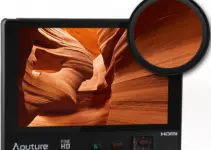Shooting a professional filmmaking project with a smartphone isn’t an innovative or revolutionary concept by any means as it has been around for quite some time now. Meanwhile, there are numerous examples of successful award-winning projects shot this way.
Plus, it’s not a secret that majority of these productions have been using the latest available iterations of the Apple’s iPhone being predominantly 5/5S, 6/6 Plus or 6S/6S Plus. Now, when the iPhone 7 is officially out, some filmmakers owning the iPhone 6/6 Plus are wondering whether the upgrade to the latest model would worth it.
If you currently have an iPhone 5 this would be an easy question to answer, however, jumping from iPhone 6 to iPhone 7 might not be so obvious decision to make. In the quick comparison video below, Griffin Hammond tries to find out how the new f/1.8 camera on the iPhone 7 stacks up against the older f/2.2 on the iPhone 6S.
Apparently, one of the biggest improvements regarding the iPhone 7 video shooting capabilities is the addition of the optical image stabilization that can be spotted right away when shooting video in this side-by-side comparison. Of course, you will still need to use some additional gear such as the Osmo Mobile to get even smoother results, but the built-in image stabilization will certainly help when it comes to filming professional footage with the iPhone 7.
Furthermore, the new lens of the iPhone 7 is slightly bigger providing a maximum aperture of f/1.8 in comparison to the existing f/2.2 lens of the iPhone 6S. As Griffin points out, it may not look like a major change, but in reality, it certainly makes a difference that can be easily spotted when shooting in low light situations like the one below.
Bigger apertures also result in a shallower depth of field, however, the actual result here is not that impressive considering the relatively small size of the camera’s sensor. A nice addition in this regard is the ability to produce artificial bokeh effect on the iPhone 7, a feature that’s not available on the previous models and even though it’s not the best overall option you have, it can still be a handy feature in some situations.
The support for DCI-P3 in-camera, the more power efficient 12MP sensor and the additional camera on the 7 Plus model are welcomed features to the filmmaking capabilities of the iPhone 7 line, but if you are still not convinced that they worth the upgrade from 6S or iPhone 6S Plus, you might want to consider investing in additional accessories rather than upgrading your smartphone. Either way, shooting a professional footage with such a device is still an exciting opportunity for all indie filmmakers working on a shoestring budget who have a great story to tell.
[source: Griffin Hammond]
Disclaimer: As an Amazon Associate partner and participant in B&H and Adorama Affiliate programmes, we earn a small comission from each purchase made through the affiliate links listed above at no additional cost to you.





“Does the iPhone 7 Upgrade Worth It”?
What upgrade? The image is trash, nothing but a 4K water painting!
Thank you for you very instructive comment. sigh..
iPhone 7 Plus has a nice camera(s) system. But yeah, the noise reduction applied by these smart phones in post is too extreme. Photos look good on a tiny screen, but if you zoom in just a little bit the noise reduction makes things look like a painting. Not really the fault of the actual hardware per say, it is something applied on the backend by the phone’s software, but it is annoying. That being said, I do find myself using the zoom on the iPhone 7 Plus more than usual. And we’ll find out soon how good the DOF simulation will be and whether it’s worth it.
A telephone is not related to filmmaking.